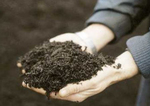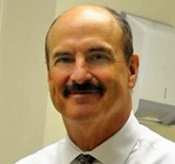Welcome To Chiro Health Care's Newsletter |
March 2018 www.drstonechiropractor.com |
|
Composting at Home: Going Green  Composting at Home: Going Green Across the United States, people are finding more and more places to deposit their compost, such as at farmers? markets or green spaces. Once a farming and home economist tradition, composting is finding revitalization. This movement is growing in popularity as an effort to improve the state of the earth. Why compost? What does wasted food mean for the environment? Food rotting in landfills contributes to global warming by causing methane emissions or greenhouse gasses. Wet food waste is the main threat to groundwater or stream pollution, in addition to the potential for leaks and runoff from some landfills. How does composting help the environment? What can I compost? Basically, you can compost anything that comes from the earth, including: How do I compost? An airtight bucket in the kitchen: Keep the bucket either in your refrigerator or on the countertop. Take it to a composting spot (usually at your farmers? market) each week. Most major cities have composting collection Web sites listed on the Internet. Open compost bin: Choose a designated spot and make a container without a lid for ?green? materials. Allow rainwater and air to accelerate the process of making the compost. This type of bin may attract pests and animals, so many people choose to top their open container with a layer of straw. Closed compost bin: Many people choose to purchase a compost bin, which comes with directions for making successful compost. These are good choices for gardeners, who use the compost to plant and grow their seeds. An online search can help find the one that is right for you. Visit www.howtocompost.org for more information. References and recommended readings Bloom J. The food not eaten: food waste. Available at: http://www.culinate.com/articles/features/wasted_food. Accessed January 13, 2011. CompostGuide.com. Why make compost? Available at: http://compostguide.com/. Accessed January 13, 2011. HowToCompost.org. Your compost resource. Available at: http://www.howtocompost.org/. Accessed January 13, 2011. Rathje W. Once and future landfills. National Geographic. 1991;179:116-134. The Garden of Oz. The basics of composting. Available at: http://www.thegardenofoz.org/composting101.asp. Accessed January 13, 2011. Review Date 2/11 |
|
|
|
